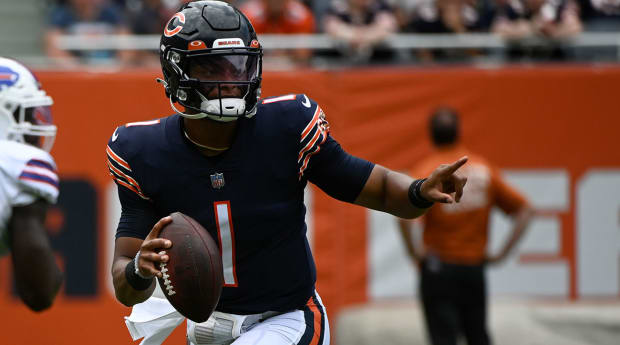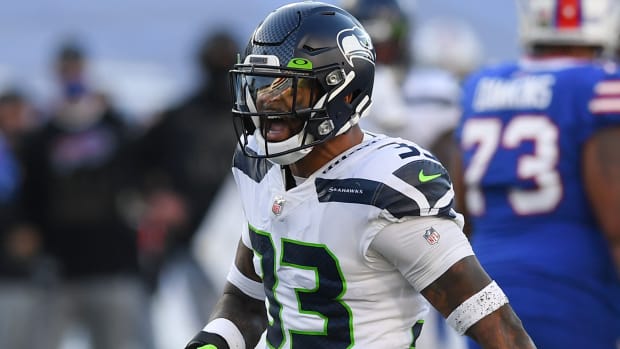There’s a reason you draft a QB in the first round: to play them. Plus, how the Seahawks lost their leverage before the Jamal Adams deal was done.
Sometimes conventional wisdom is simply old-fashioned “the way we’ve always done things” thinking. There is some of that thinking when it comes to playing rookie quarterbacks, even those picked high in the first round of the draft. Excluding first-round quarterbacks who are behind future Hall of Fame quarterbacks (the Packers edition), I just don’t get the idea that these players should sit, wait and learn from quarterbacks whose current level of play is, well, average.
Ultimately, all of these teams end up agreeing with me and end up playing the young quarterbacks far sooner than they say they will. I guess I just wish they would lose the posturing and b.s. about it. Teams always say that these future faces of the franchise will sit and learn behind some “placeholder” quarterback keeping the seat warm for them for their rookie season, if not longer. But that never happens.
I’m old enough to remember when Blake Bortles was taken third by the Jaguars, who said he would not play and learn his entire rookie season; that lasted three games. Baker Mayfield was going to sit and learn while Tyrod Taylor played; that lasted three games. Justin Herbert was going to sit and learn while Taylor played; that lasted one game. Sam Darnold was going to sit and learn while Josh McCown played; he started Week 1. Josh Rosen was going to sit and learn while (Business of Football Hall of Famer) Sam Bradford played; that lasted three games. Lamar Jackson was going to sit and learn while Joe Flacco played; that lasted nine games. Some of these decisions were hastened by injuries to other players, but you get the point.
Yes, Patrick Mahomes sat a year behind Alex Smith. And yes, Green Bay’s first-round quarterbacks sat three years (Aaron Rodgers) and—I have predicted—two years (Jordan Love) but, as noted above, these are completely different animals. All others in recent memory have ended up playing by the middle of their rookie seasons. And the class of 2021 should do the same.

Matt Marton/USA TODAY Sports
Class of 2021
The Jaguars are still trying to tell the lie that they don’t know whether Trevor Lawrence will start the opening game; good luck selling that. With Zach Wilson and the Jets, there is no charade about his playing. As for the other three first-round quarterbacks in this year’s draft—Trey Lance (49ers), Justin Fields (Bears) and Mac Jones (Patriots)—the teams are still posturing that they will sit for a while to “learn” from Jimmy Garoppolo, Andy Dalton and Cam Newton, respectively. The teams can take this stance all they want; but don’t believe it. I think they will all play soon: at least by October, probably sooner.
And why not? How exactly are these players going to benefit from sitting rather than playing? Sure, they will have growing pains, but that will be the case regardless of when they play; is it not better to have those growing pains now rather than later? These players are clearly their teams’ future; the quarterbacks ahead of them may not even be on these teams next year, if not later this year. San Francisco drafted Lance to replace Garoppolo, and New England drafted Jones to replace Newton (who is a far cry from the Newton we knew a few years ago). As for Chicago, the coaches are saying all positive things about Dalton, and he will start the season, but I can’t see that lasting long.
And then there are the fans. Nothing spurs excitement in a fan base like a highly drafted rookie quarterback; it is a recipe for overreaction. Imagine what will happen when these “placeholder” quarterbacks throw a couple of interceptions or lose their first game or two? The drumbeat will be loud for the rookies to play. The teams, of course, will say they don’t pay attention to the fans or media, but 1) that is a lie, and 2) there will be internal pressure—perhaps from the owner, perhaps from the locker room—to play the rookies.
Again, I don’t get the whole “placeholder” quarterback thing when you have players in whom so much was invested, especially Lance with the 49ers, for whom the future was mortgaged. Teams should be honest with themselves and with the public that they’re going to play these rookies much sooner than they say they will.
And that’s O.K. That’s what they were drafted to do: play.

Rich Barnes/USA TODAY Sports
Seahawks’ loss of leverage
The “hold-in” strategy, where a player reports to the team but does not practice until his contract is properly addressed, produced some measure of success for Seahawks safety Jamal Adams this week. He was rewarded with a four-year deal worth $70 million that puts him squarely atop the NFL safety marketplace. Although the deal does not break any ground structure-wise—it is still two years, $35 million and “we’ll see about the rest”—it is a good deal for Adams.
Contractually, Seattle was doomed from the start of the relationship.
Seattle surrendered two first-round picks to the Jets for Adams, a level of compensation reserved for premiere players at premier positions such as quarterback, defensive end, offensive tackle and cornerback; not safety. Putting aside the issue of paying too much in trade compensation, the Seahawks also erred in not completing, or perhaps not even trying to complete, a contract extension with Adams at the time of the trade. That was their opportunity, as they were extricating Adams from a bad team and a situation he did not want to be in. Seattle clearly had leverage to extend Adams’s contract on relatively favorable terms.
For trades like this, teams should ideally engage in two simultaneous negotiations: the trade compensation and player compensation. Once the Seahawks did not complete a contract extension at the time of trade, the contract leverage shifted entirely to Adams. And, while I thought Adams had the leverage to garner guarantees past the second year of the contract, it is still a strong deal for the player, considering his position.
Leverage in contract negotiations is the most important thing, but it is fleeting. Seattle had it upon making the trade with the Jets. And then they lost it to the player. Adams’s strategic use of the “hold-in” strategy was a byproduct of that.
NOTE: I am running back my webinar Tuesday night, Aug. 24, at 8 p.m. ET, due to popular demand (and the fact that I forgot to hit the record button last week), I will again take you inside the sports business, describing the inner workings of agents, teams, leagues, etc. I will also counsel and advise on getting into this competitive industry. And there will be stories, and a long question and answer time. Please join if you haven’t yet signed up, it will be an informative and fun hour together.
More NFL Coverage:
• Dak Prescott’s Heal Turn
• An Early Look at the 2022 NFL Quarterback Carousel
• Why Installing the NFL’s Trendiest Offense Is Harder Than You'd Think
• Urban Meyer on Similarities Between College and Pro Football